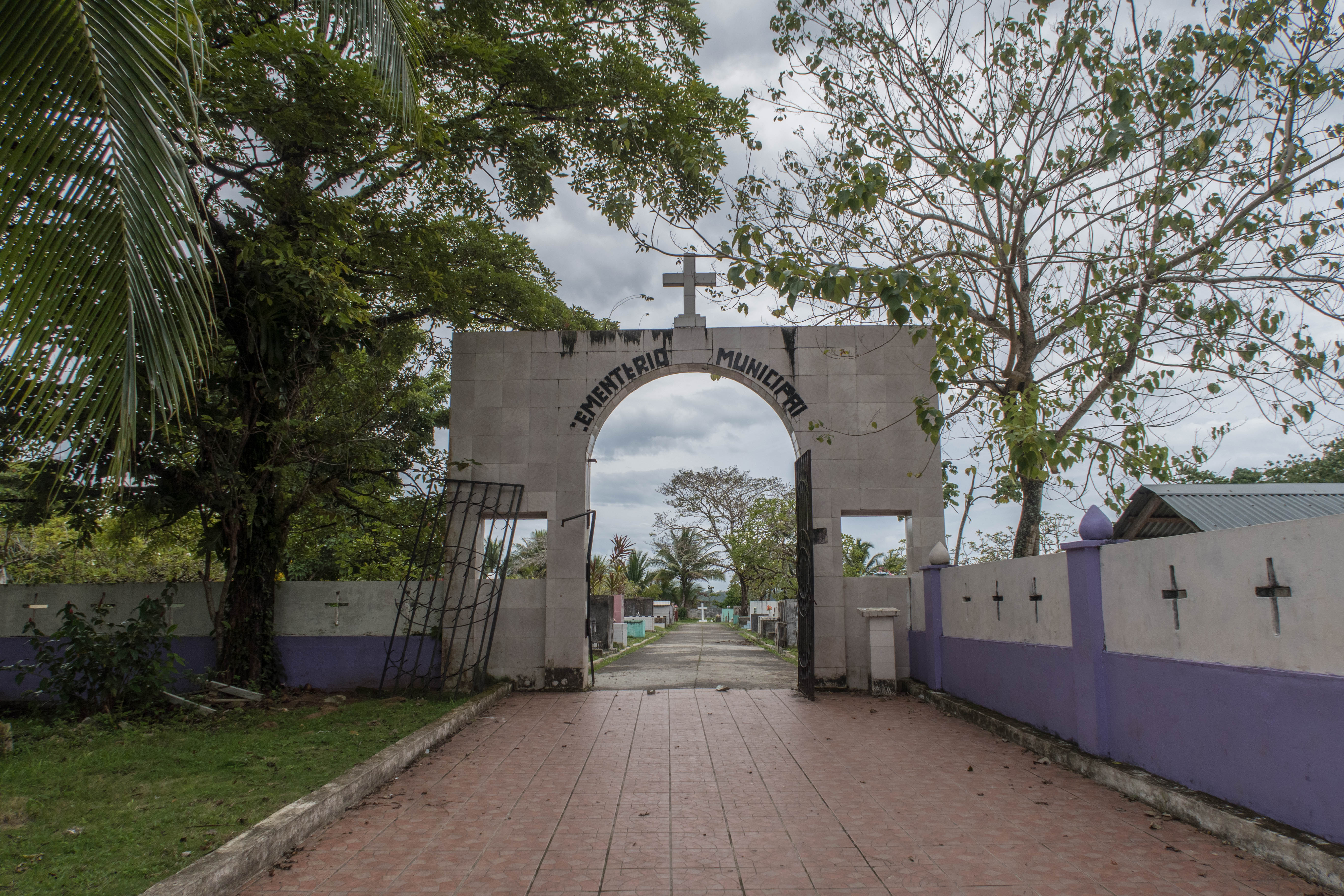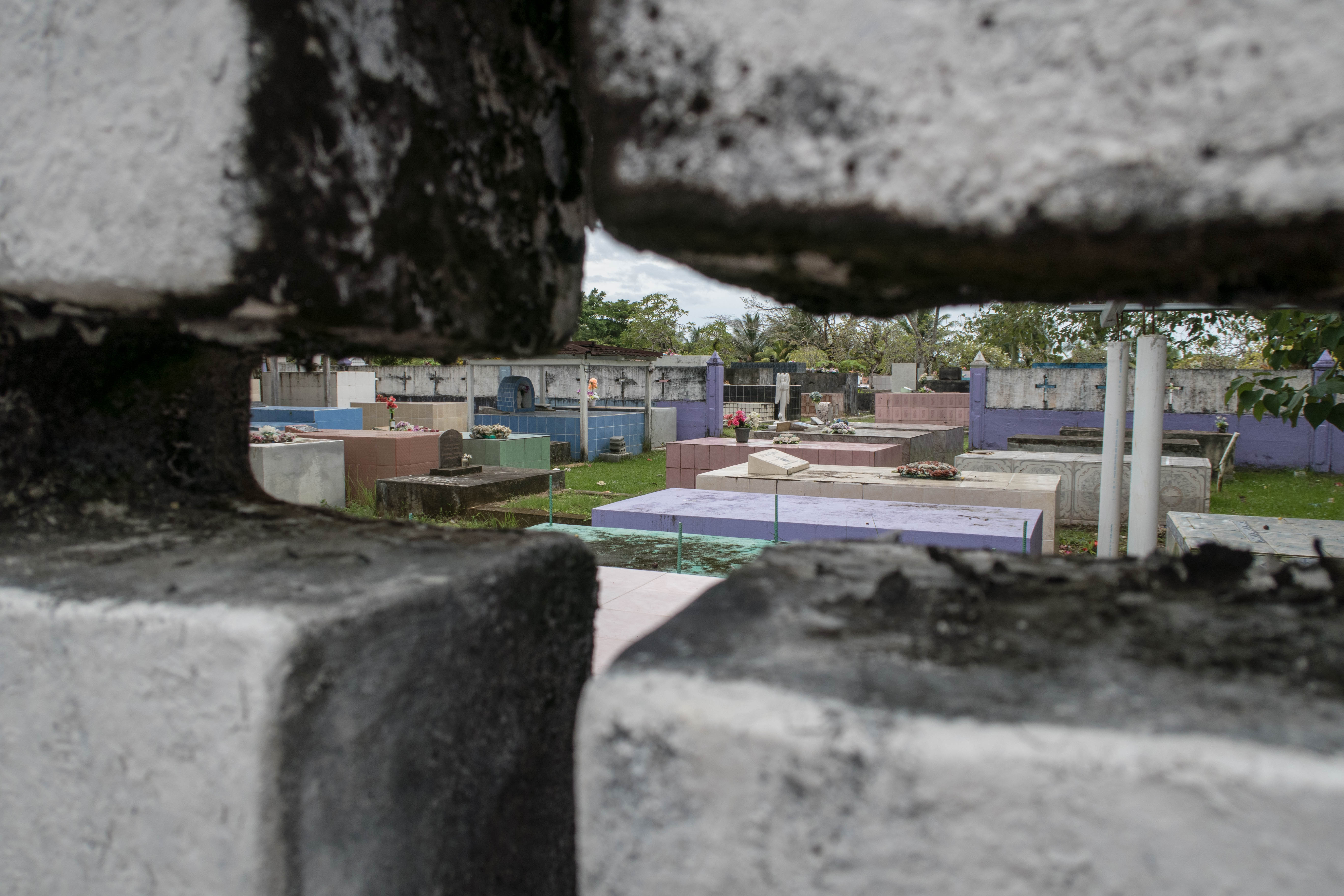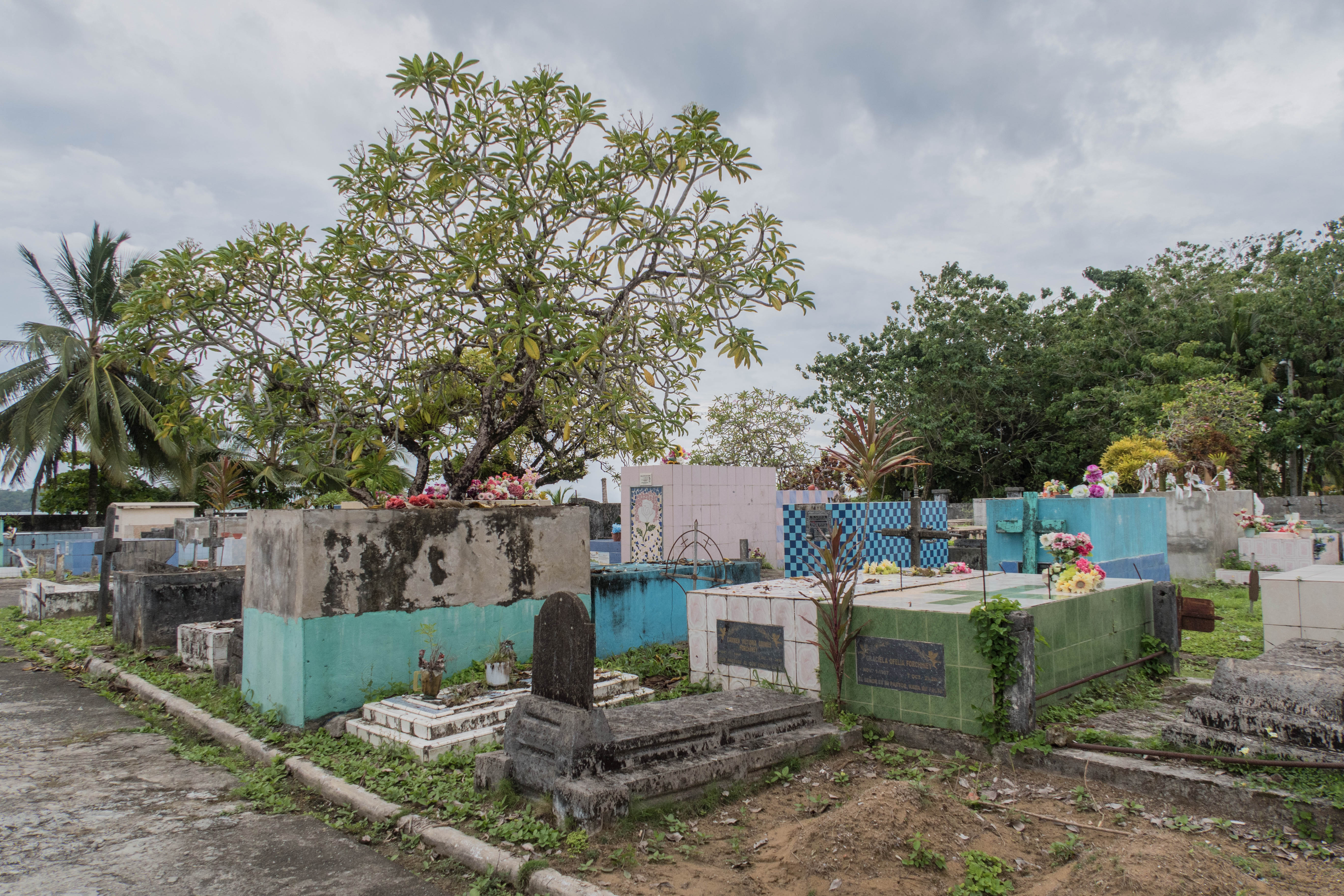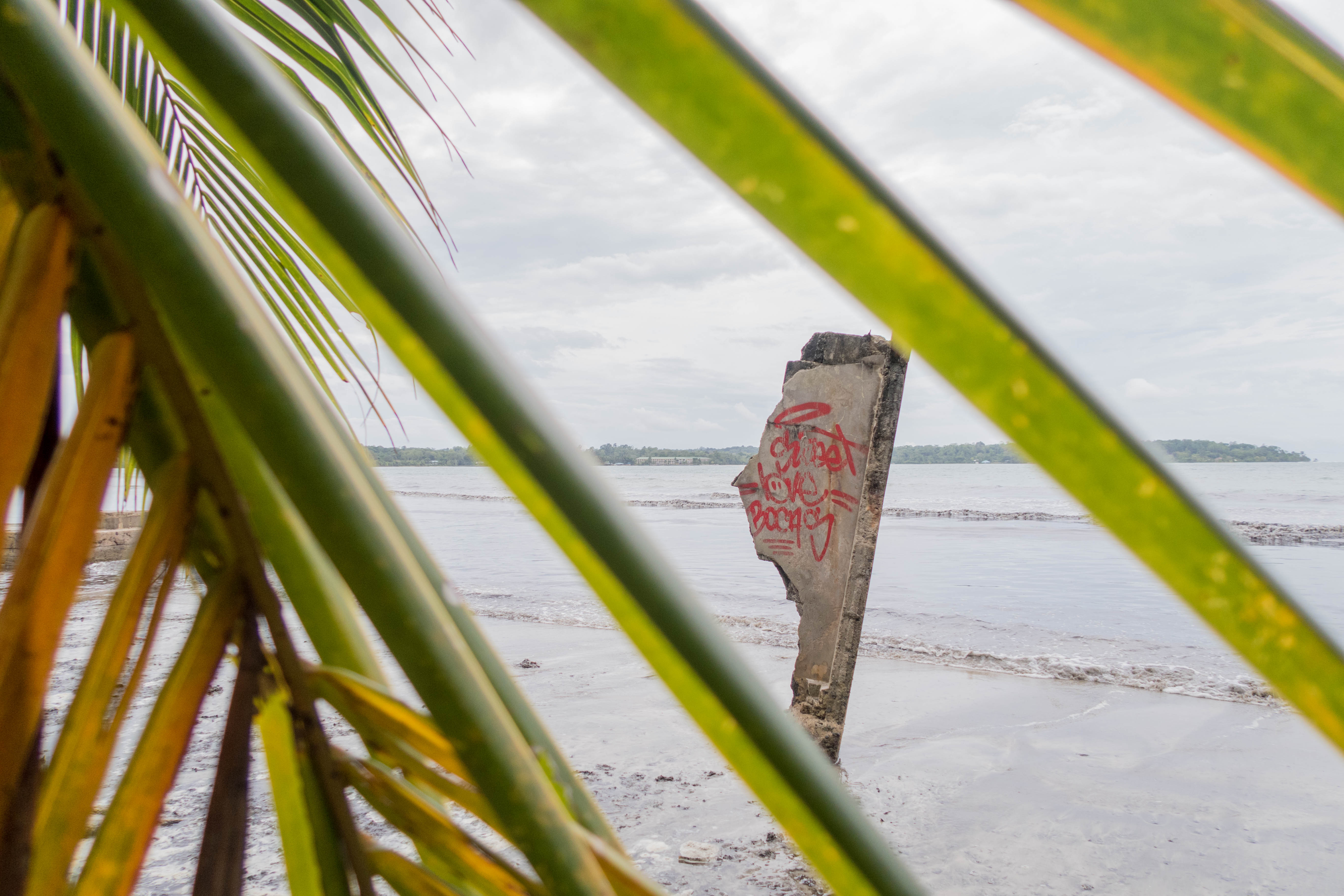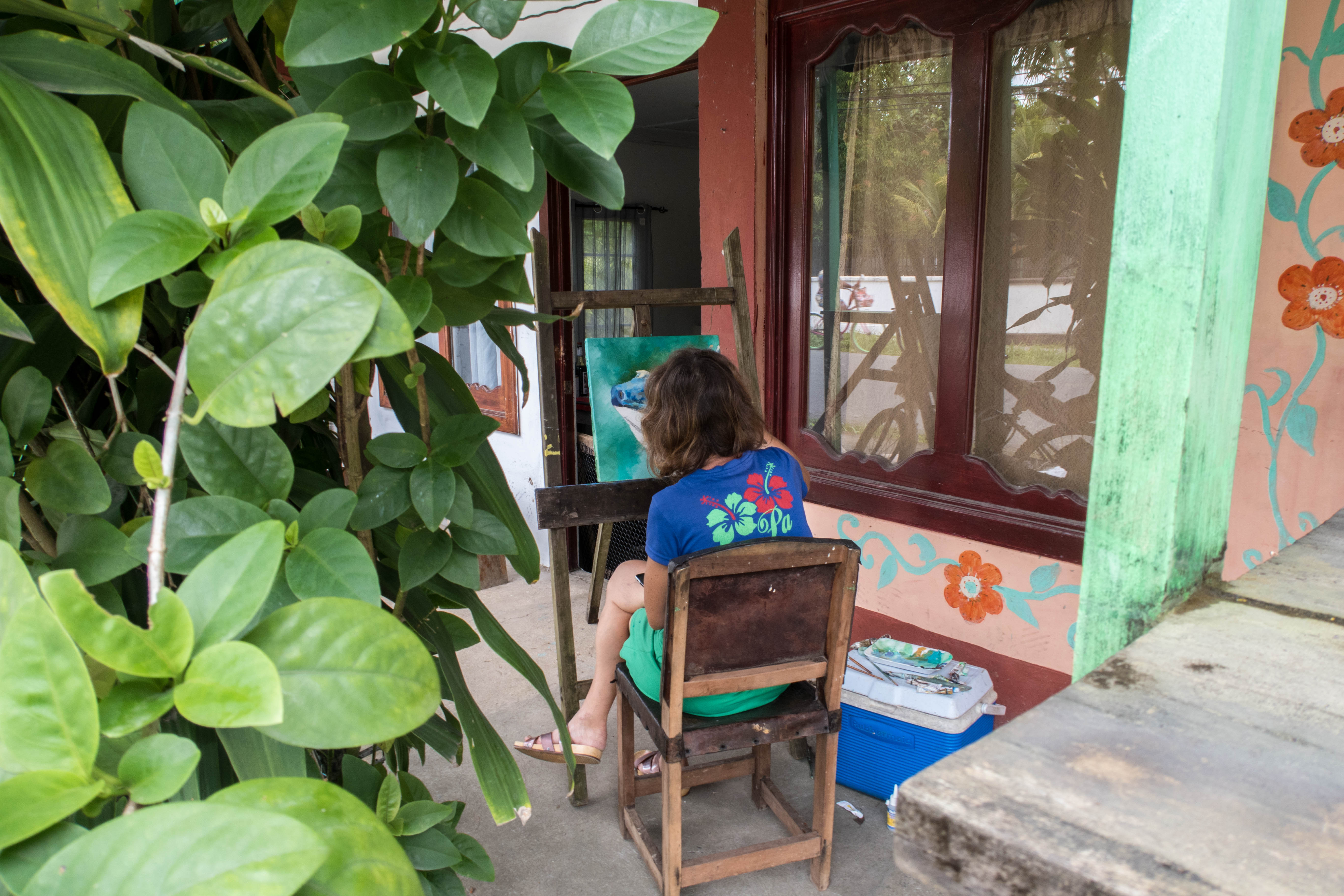Here is one of my very delayed posts about a day I had to myself in Bocas del Toro, Panama.
I found myself one Sunday wanting to go on a Big Walk all throughout town to do some random musings and quietly observe the Sunday hum-drum of tourists and locals.
I knew my first stop had to be the cemetery. I drove by it so many times wondering how people here honor those who have passed. Some of the tombs were colored by tiles and fake flowers, since fresh ones are hard to find. Nature was definitely present, with overgrowing plants and crashing waves right next to this peaceful last resting spot. I remember being surprised by how many foreign names were present in this cemetery, captains and businessmen from all over side-by-side with their local counterparts.
I also walked by this awesome sight:
“Sweet Love Bocas” is the mantra of Bocas del Toro, and you can see this graffiti all over town done by artist Fulo Coqueño.
Of course, I made my way to some of the tourist-y stands to check out molas. Molas are a form of traditional textile art made by the Guna, an indigenous group of Panama. These pieces are made by a reverse appliqué technique where pieces of cloth are sewn into panels with complex and multiple layers that are removed to create intricate designs. Before, the mola used to refer to their traditional dress, but after contact with missionaries, they began to transfer their designs on fabric. This article notes that the textile form was “an art of reaction, a hybrid art stemming from contact and conflict with whites” because the Guna were either forced or wanted to imitate Western clothing. Now, you can find Guna women selling hundreds of molas on the street, each carefully woven (if not sneakily machine stitched) and thought out. Some animals are apparently more symbolic than others in traditional Guna culture, but I was not able to distinguish this during my time there.

These are smaller molas that caught my eye, but they can get much larger (think: tapestry-sized). Those take months upon months to make, while these take much shorter.
After grabbing a sandwich, getting the local’s discount at a boutique on a sarong, and enjoying the company of the town’s park, I did a little bit of grocery shopping. One thing that might strike you as unusual at first is the number of grocery stores here…and the fact that they are all owned by Chinese people. In fact, it is common to just refer to grocery stores as “Chinos” here for that reason. Oftentimes, I will speak to the cashiers and owners in Chinese just to ask them how their days are going. The origin for Chinese people in Panama can be traced back to the 1850s when Chinese laborers helped construct the Panama Canal Railway and later, the Panama Canal.

Views from my park bench! Behind this tree is the hostel I stayed in the last time I was in Bocas working on a low-budget marine project.
On my way back to the station trying to catch a taxi, I also got a glimpse of a local artist painting on her front yard. How painter-esque!
I also serendipitously met up with Juan, a waiter from a burger place that I knew from visiting there so often in two months. We got a beer at a local hotel happy hour and ended up talking for two hours about science and human existence. Kind of weird, kind of okay…
And that’s how I ended my solo adventure in Bocas, the last adventure I will have there for now.

